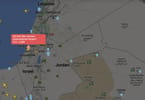While there are still scenarios that would take Hurricane Joaquin out to sea, the possibility of the hurricane reaching the Eastern United States coast is gaining merit.
Joaquin is forecast to continue to gather strength just northeast of the Bahamas during the next couple of days before it begins its northward run along the East coast. The system could reach Category 3 strength.
The storm will bring pounding surf, dangerous seas, strong winds, drenching squalls and flash flooding to the central Bahamas. Wind gusts could reach between 75 and 100 mph on some of the islands.
Joaquin Track Scenarios
The most likely scenario is for Joaquin to be guided westward this weekend with possible landfall between North Carolina and southern New Jersey on Sunday.
Exactly where the system rolls ashore and progresses inland will define the worst conditions in terms of wind and flooding. It is too early to say for sure exactly where Joaquin may move onshore.
Should Joaquin track into northeastern North Carolina, conditions may get very nasty over the Delmarva Peninsula with significant rain, wind and coastal flooding westward to the Chesapeake Bay, including the Washington, D.C., and Baltimore areas. Conditions could approach that of Isabelle.
Should Joaquin track into the Delmarva Peninsula, then similar very rough conditions would occur from Delaware to New Jersey, including areas westward through the Delaware Bay region, including Cape May, New Jersey, Rehoboth Beach, Delaware, and Philadelphia. Conditions could approach or exceed that of Irene.
A less likely path for Joaquin is to stay at sea directly avoid land, with less severe impact along the coast this weekend into early next week.
At this venture, people along the coast from the Carolinas to southern New England should be prepared for the possibility of hurricane conditions with everything from inland to coastal flooding and strong winds.
Many areas can expect rounds of heavy rain on top of what has already fallen with the next dose set to begin as early as Thursday night in the mid-Atlantic.
The result from the storms, whether or not topped off from Joaquin, will still produce widespread flooding.
Inland Flooding
Preceding the arrival or close approach of Joaquin will be another dose of heavy rain during Friday and this weekend. Motorists and airline passengers should be prepared for delays. Some neighborhoods could become flooded.
Many football fans heading to games this weekend will get drenched, and the likelihood of muddy parking lots exists. Baseball fans may have their last games of the regular season postponed.
Each subsequent round of rain will bring increasing runoff that will find its way from storm drains to streams and eventually larger rivers. As a result, flooding will progressively become more widespread.
Flash flooding along small streams and in urban areas is a given with the event through the weekend. Enough rain may fall to cause flooding along unprotected areas of rivers, perhaps including the Potomac, Shenandoah and James by early next week.
The combination of rain from earlier this week and what is expected to continue into early next week may approach a foot in some locations, hence the serious flooding.
Coastal Flooding, Strong Winds
Like flash and urban flooding, coastal flooding and beach erosion with this event are a given.
The coastal flooding and stiff winds will not wait until the day Joaquin arrives but will continue to build Friday through the weekend.
How severe the coastal flooding and winds become will depend on the strength and track of Joaquin this weekend.
The onshore winds from the east will push the Atlantic Ocean water toward the coast, causing it to pile up around the barrier islands, back bay and inland bays. This is known as coastal flooding.
If Joaquin remains a hurricane and plows onshore between North Carolina and the Delmarva Peninsula, major flooding at times of high tide are likely near and north of the storm’s center.
In this case, water levels in some areas could rise to an average of 3-6 feet above normal tides up to a couple of hundred miles north of the center. Under this scenario, these conditions could reach as far north as New York City and Long Island Sound with lesser water rises in New England.
Even if Joaquin stays at sea and curves away, there will still be a non-tropical component of the storm that delivers minor to moderate coastal flooding and stiff winds over a broad area from the Carolinas to the New England coast.
The strength of the east to northeast winds will depend on the strength of Joaquin and or the non-tropical storm to the south. Winds could become strong enough to down trees and power lines and cause minor property damage.
WHAT TO TAKE AWAY FROM THIS ARTICLE:
- The combination of rain from earlier this week and what is expected to continue into early next week may approach a foot in some locations, hence the serious flooding.
- At this venture, people along the coast from the Carolinas to southern New England should be prepared for the possibility of hurricane conditions with everything from inland to coastal flooding and strong winds.
- If Joaquin remains a hurricane and plows onshore between North Carolina and the Delmarva Peninsula, major flooding at times of high tide are likely near and north of the storm’s center.






















